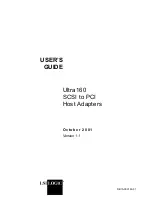
S e n d d o c u m e n t a t i o n c o m m e n t s t o m d s f e e d b a c k - d o c @ c i s c o . c o m
52-19
Cisco MDS 9000 Family CLI Configuration Guide
OL-16184-01, Cisco MDS SAN-OS Release 3.x
Chapter 52 Monitoring Network Traffic Using SPAN
Remote SPAN
Figure 52-9
FC and RSPAN Tunnel
Guidelines to Configure RSPAN
The following guidelines apply for a SPAN configuration:
•
All switches in the end-to-end path of the RSPAN tunnel must belong to the Cisco MDS 9000
Family.
•
All VSANs with RSPAN traffic must be enabled. If a VSAN containing RSPAN traffic is not
enabled, it is dropped.
•
The following configurations must be performed on
each
switch in the end-to-end path of the Fibre
Channel tunnel in which RSPAN is to be implemented:
–
Trunking must be enabled (enabled by default).
–
VSAN interface must be configured.
–
The Fibre Channel tunnel feature must be enabled (disabled by default).
–
IP routing must be enabled (disabled by default).
Note
If the IP address is in the same subnet as the VSAN, the VSAN interface does not have to
be configured for all VSANs on which the traffic is spanned.
•
A single Fibre Channel switch port must be dedicated for the ST port functionality.
•
Do not configure the port to be monitored as the ST port.
•
The FC tunnel’s IP address must reside in the same subnet as the VSAN interface
See
Chapter 43, “Configuring IP Services.”
ST Port Characteristics
ST ports have the following characteristics:
•
ST ports perform the RSPAN encapsulation of the FC frame.
•
ST ports do not use BB_credits.
•
One ST port can only be bound to one FC tunnel.
VSAN 2
Cisco MDS 9000 switch
Cisco MDS 9000 switch
ST port
TE port
SD port
FC analyzer
Source swtich
Destination swtich
FC tunnel
VSAN 2
99007
RSPAN tunnel
Cisco MDS
Fibre
Channel
fabric
















































